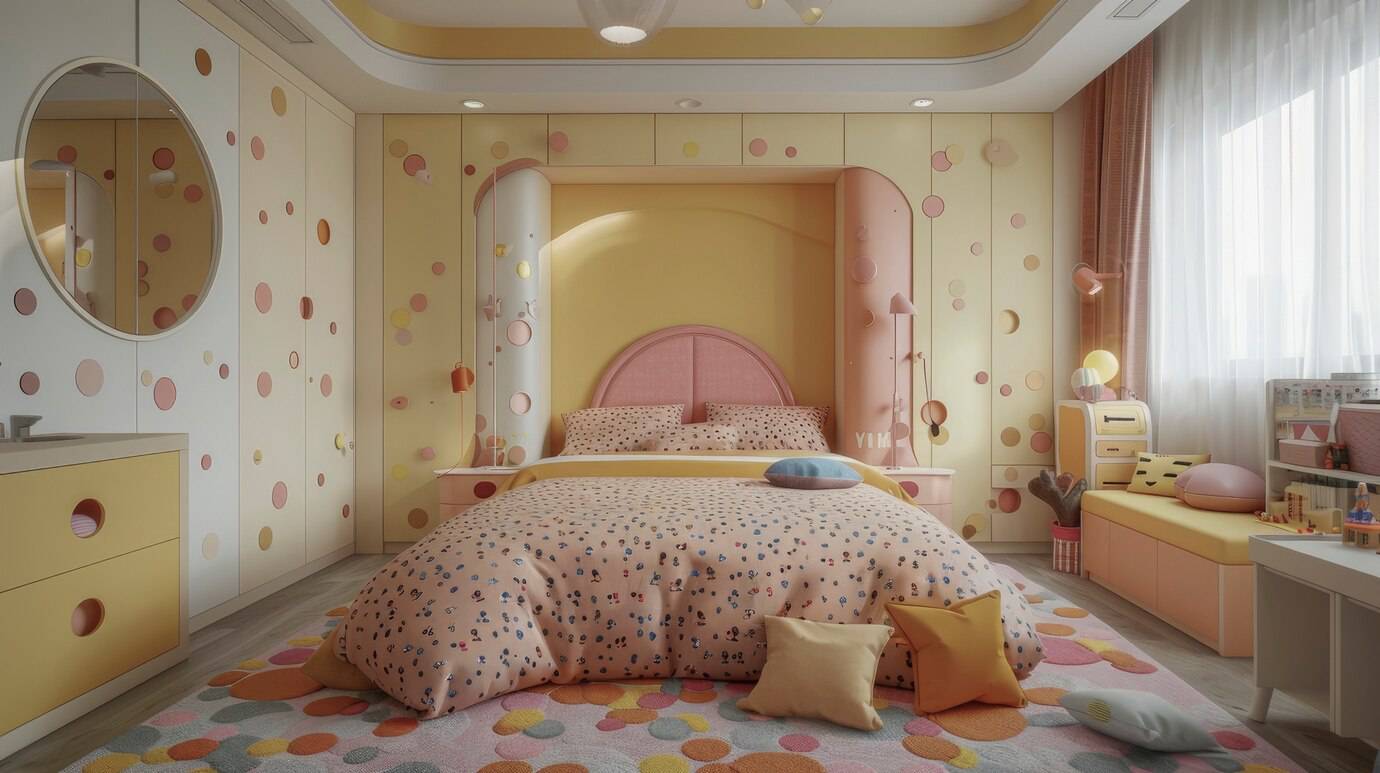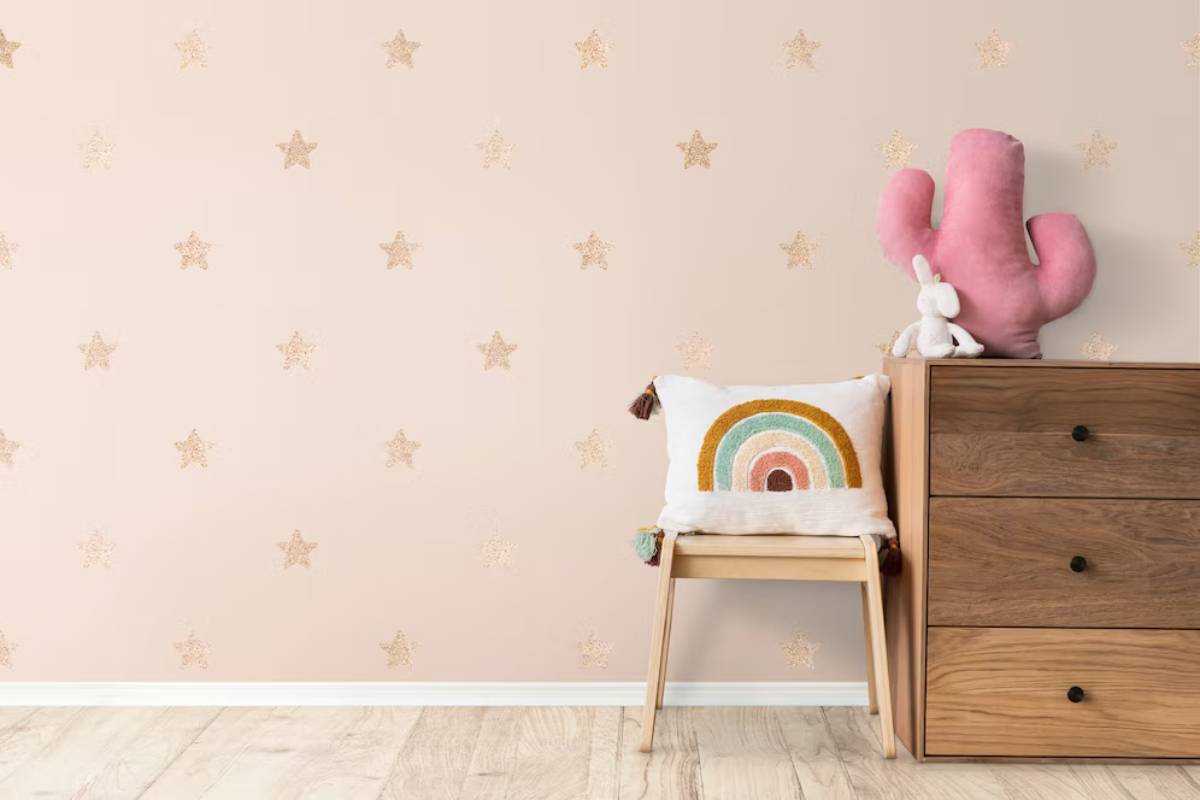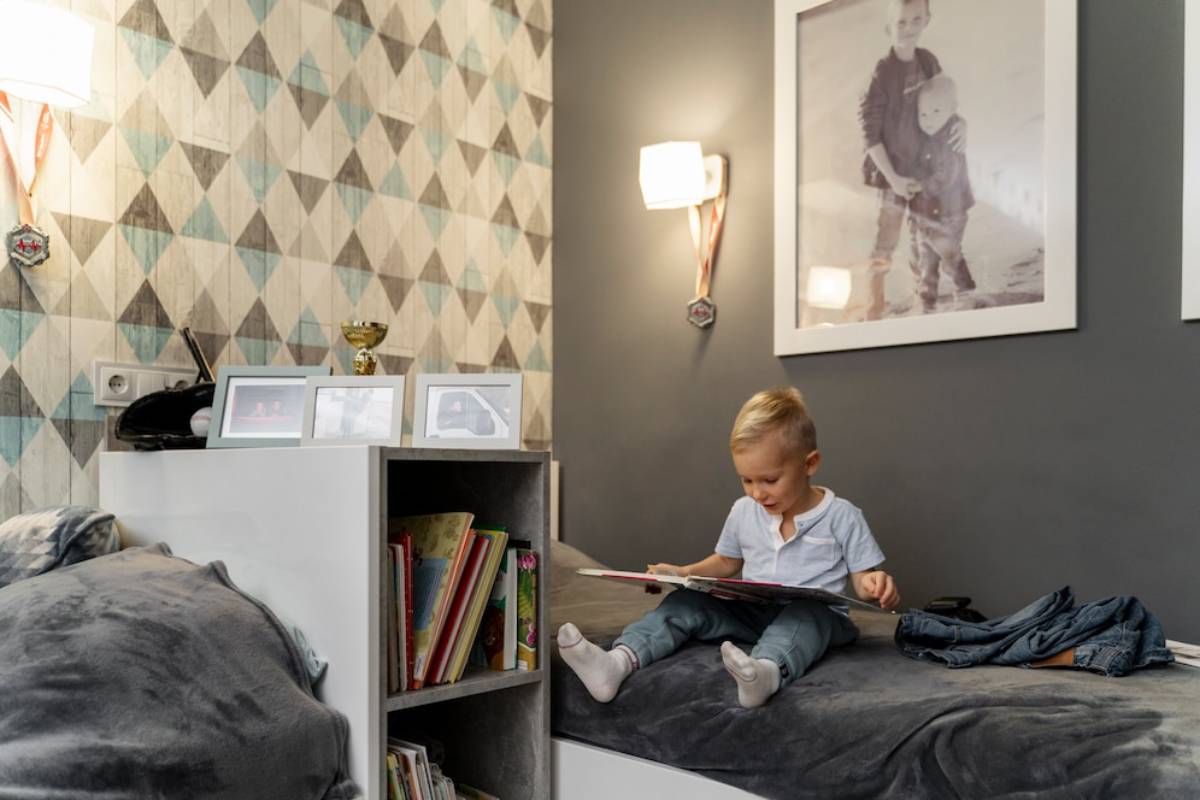
Muted Colours and Patterns for Children’s Decor
Step into most children’s bedrooms and you’re greeted with a whirlwind of colour — bright walls, cartoon bedding, and storage bins in every neon hue. It’s joyful, yes. But often overwhelming. For children, particularly those sensitive to noise and visual clutter, such environments can feel chaotic rather than calming.
Now imagine the opposite: a room where soft tones, gentle patterns, and thoughtfully chosen elements create a sense of comfort, creativity, and calm. That’s the essence of Scandi children style — and at its heart is playful minimalism powered by muted colour schemes.
In this article, we’ll explore how you can transform a child’s room using muted kids room decor that doesn’t sacrifice playfulness for polish. Whether you’re designing a nursery or revamping your child’s space, you’ll find practical tips, beautiful examples, and expert-backed advice to help you strike the right balance.
Why Muted Colours Make Sense in Children’s Spaces

Bright primary colours have long been considered staples for children’s rooms. But recent studies in developmental psychology and design theory suggest a different story. Muted palettes — think sage greens, dusty pinks, warm greys — may actually enhance focus, reduce overstimulation, and encourage imaginative play.
Benefits of Muted Colour Palettes
- Promote Calm: Soft tones lower visual stress, creating a soothing atmosphere perfect for sleep and study.
- Encourage Creativity: Neutral backgrounds give toys, books, and artwork space to shine.
- Grow With the Child: Muted hues feel timeless, adapting easily as children grow from toddlers to teens.
- Align with Scandinavian Design: A hallmark of Scandi children style, muted tones reflect the Nordic love of nature and minimalism.
This doesn’t mean you have to ditch all colour. Instead, it’s about choosing subdued, natural shades that allow for subtle sophistication and layered textures.
Choosing the Right Muted Colour Palette
Getting started can be daunting, especially with the endless array of paint swatches and fabric options. But Scandinavian-inspired children’s rooms usually draw from nature: forest greens, pebble greys, warm sands, misty blues. These palettes are soft but still full of personality.
Tips for Picking the Perfect Palette
- Start with a Base: Choose a soft neutral like ivory, taupe, or soft grey for the walls. These shades reflect light and create a blank canvas.
- Layer in Colour: Add muted tones like dusky rose, sage, mustard, or pale clay through textiles and accessories.
- Add Depth with Texture: Use rugs, wall hangings, wooden toys, and natural fibres to create interest without relying on strong colour contrasts.
- Keep It Cohesive: Limit your palette to 3–5 tones. This avoids visual chaos and makes mixing and matching easier.
Tip: Always test your paints or fabrics in natural light. What looks taupe in the shop may appear peachy in a sunlit room.
Using Patterns in a Playful Minimalist Way
Patterns in Scandinavian kids’ rooms are subtle, not loud. Rather than big, bold prints, think soft geometrics, delicate florals, and hand-drawn motifs.
How to Use Patterns Without Overwhelming the Room
- Accent Wallpaper: Try a single wall with a small-scale print — think tiny stars, muted rainbows, or abstract dots.
- Textiles: Bedding, curtains, or cushions with gentle patterns add personality without taking over.
- Layered Rugs: Combine a base rug with a patterned play mat or sheepskin for both softness and visual interest.
- Handmade Art: Framed prints with nature-inspired line drawings or quotes in delicate fonts suit the Scandi aesthetic.
The goal is to create a room that feels visually quiet but rich in detail — a backdrop for play and rest that feels grounded and beautiful.
Furniture and Decor That Support the Theme
Scandi design thrives on clean lines, natural materials, and practicality. The same applies when choosing furniture and décor for a muted kids room.
Scandinavian-Inspired Furniture Essentials
- Natural Wood Finishes: Pine, birch, and oak add warmth without heaviness.
- Low-Profile Beds: Sleek wooden frames or house-frame beds that feel grounded and secure.
- Modular Storage: Open shelving with canvas or jute bins keeps toys organised but accessible.
- Convertible Pieces: Look for cribs that transform into toddler beds, or desks that grow with your child.
Decor should feel just as intentional:
- Woven Baskets: Perfect for storing toys or laundry, and double as texture-rich décor.
- Wall Hooks: Wooden peg rails for hanging clothes or bags — functional yet stylish.
- Canopies or Tents: A muted canopy over the bed or in a corner creates a magical nook without clashing with the colour scheme.
These pieces support the idea of playful minimalism — design that delights children but also respects the wider harmony of your home.
Real-Life Inspiration: Matilda’s Muted Room Makeover
Take Matilda, a six-year-old living in Manchester. Her parents, both freelancers working from home, found her original room — full of loud posters, plastic furniture, and bright colours — was overstimulating and chaotic. Sleep was a struggle, and clean-up time was always a battle.
They chose to shift to a Scandi-inspired muted palette. Here’s how it went:
- Walls were painted a warm greige, instantly softening the room.
- A house-frame bed in natural pine anchored the sleeping space.
- Soft sage green and blush accents appeared in cushions, curtains, and a rug.
- Toys were reduced and rotated, stored in labelled woven baskets.
- A single wall featured delicate bird-patterned wallpaper — Matilda’s favourite.
Now? Bedtime is calmer, the space is more manageable, and Matilda calls it her “fairy forest room.”
The Role of Lighting in a Muted Room
Colour isn’t just about paint — lighting plays a huge part in how a room feels. A well-lit room will allow muted tones to shine, while poor lighting can make even the best design feel flat.
Lighting Tips for Soft Spaces
- Natural Light First: Maximise daylight with sheer curtains or Roman blinds in soft tones.
- Layered Lighting: Combine a central pendant light with bedside lamps or wall sconces.
- Warm Bulbs: Choose warm white (2700K–3000K) over cool white to maintain a soft, inviting glow.
- Fairy Lights or Night Lamps: Add magic and reassurance without harsh brightness.
Scandi design embraces natural changes in light across the day — use it to enhance your child’s circadian rhythm and sense of calm.
Common Mistakes to Avoid
It’s easy to misinterpret muted design as “bland” or “cold.” Here are a few pitfalls to steer clear of:
- Over-sanitising the Space: Muted doesn’t mean sterile. Add plenty of softness and warmth with textiles, wall art, and wood tones.
- Choosing the Wrong Grey: Not all greys are equal. Some lean blue or green and can feel cold. Opt for warm undertones in children’s rooms.
- Forgetting Fun: Minimalism doesn’t mean joyless. Incorporate whimsical shapes, tactile toys, and a few quirky accents to keep things playful.
- Neglecting the Child’s Input: Even toddlers can show preferences. Offer two colour choices, let them pick their cushions, or help choose wall prints.
The best rooms balance parent-led design with child-centred touches — so your child feels ownership and comfort in their space.
Sustainable and Safe Choices
Another reason Scandinavian design resonates with parents is its eco-conscious, safe approach to home furnishings.
Eco-Friendly Décor Ideas
- Non-toxic Paints: Opt for low-VOC or water-based paints.
- Sustainably Sourced Wood: Look for FSC-certified furniture.
- Organic Textiles: Choose GOTS-certified cotton or OEKO-TEX® materials for bedding and curtains.
- Handmade Toys and Decor: Support local artisans and reduce plastic by choosing wooden or fabric toys.
By making conscious choices, you not only create a safer environment but also teach your child the value of quality over quantity.
Calm, Creativity, and Childhood — The Scandinavian Way

Designing a child’s room using muted colours and patterns doesn’t mean stripping away fun. In fact, it opens up space — mentally and physically — for more meaningful play, better rest, and a stronger connection to the room itself.
The Scandi children style is about playful minimalism — where each element is intentional, comforting, and enduring. It respects the child’s developmental needs while also integrating beautifully with the rest of your home’s design.
So, whether you’re starting from scratch or refreshing an existing room, remember: muted doesn’t mean dull. It means deliberate. It means peaceful. And it can mean deeply personal and joyful, too.
Feeling inspired? Start small — maybe a colour swap or new bedding — and watch the transformation unfold. Then share your journey with us in the comments. What colours do your little ones love? What has worked (or not) in your space?


